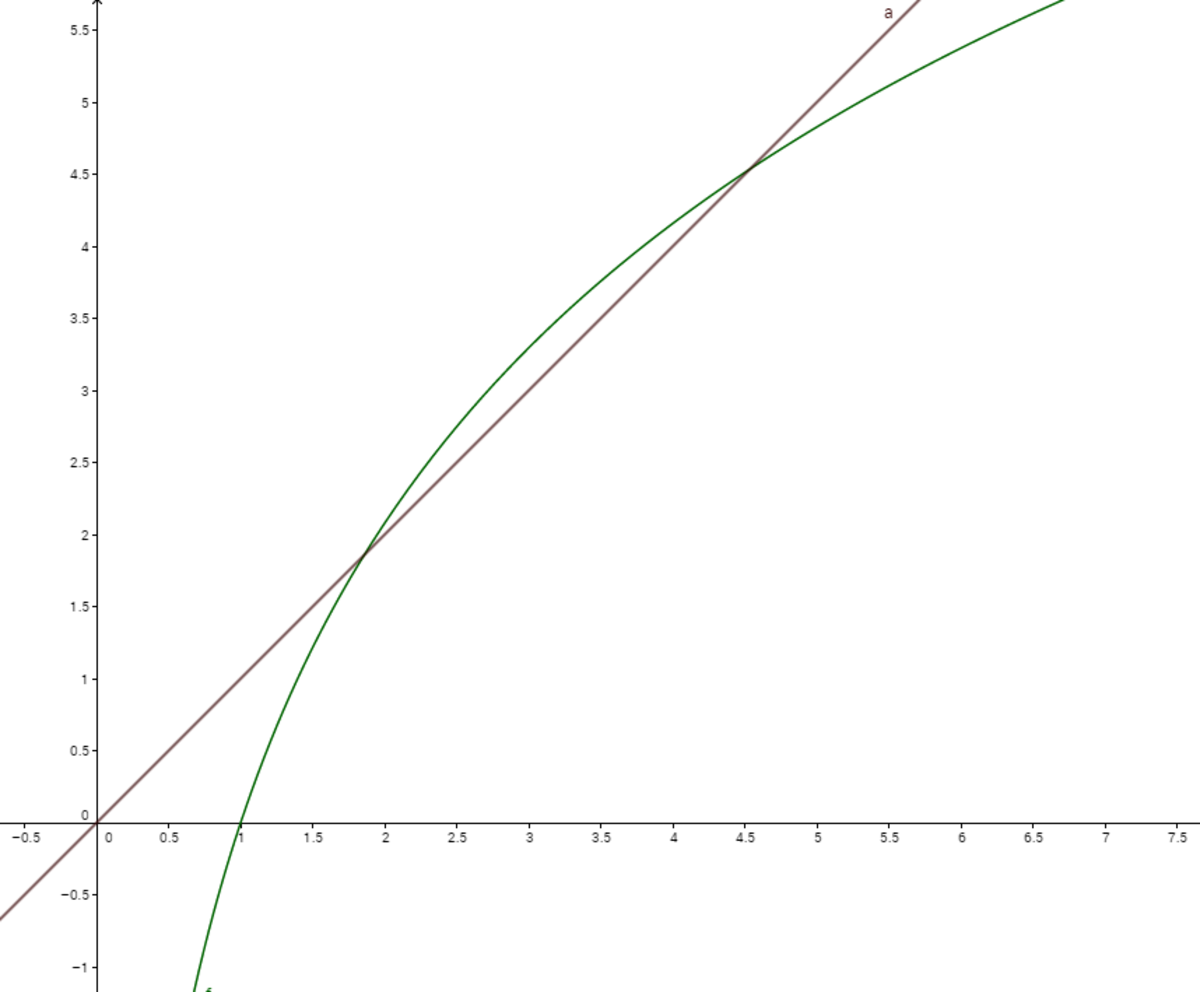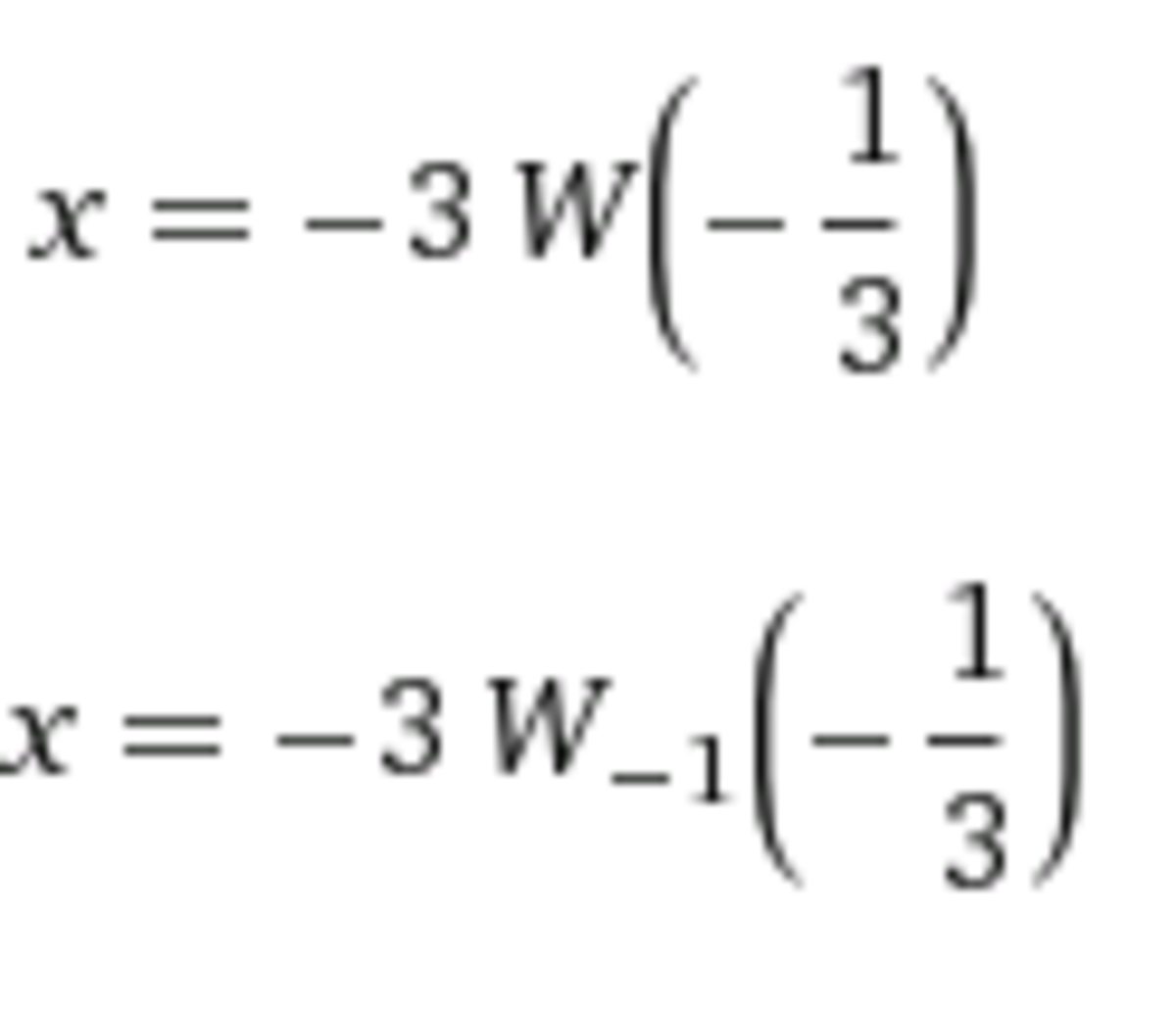Can you draw its graph? 3
e x = x 3
How many distinct real values of x satisfy the above equation?
Check out more problems which can solved easily by sketching their graph. Try the set: Can you draw its graph?
This section requires Javascript.
You are seeing this because something didn't load right. We suggest you, (a) try
refreshing the page, (b) enabling javascript if it is disabled on your browser and,
finally, (c)
loading the
non-javascript version of this page
. We're sorry about the hassle.
8 solutions
What program did you use to draw the graph?
Just for curiosity, considering the properties of the Lambert W function, i tried to get the number of solutions.
e x = x 3
( e x ) − 3 1 = ( x 3 ) − 3 1
e − 3 x = x − 1
x e − 3 x = 1
− 3 x e − 3 x = − 3 1
W ( − 3 x e − 3 x ) = W ( − 3 1 )
− 3 x = W ( − 3 1 )
x = − 3 W ( − 3 1 )
Then....
W ( x ) , for:
-
x < − e 1 gives 0 real solution;
-
x = − e 1 , W ( − e 1 ) =-1 (1 solution);
-
− e 1 < x < 0 gives 2 real solutions;
-
0 ≤ x gives 1 real solution.
As − e 1 < − 3 1 , we have 2 real solutions.
Moderator note:
How could we verify the property of the Lambert function that leads to this result?
well,I know so little about Lambert W…Maybe it's a nice solution.
Clearly, there are no solutions x ≤ 0 . For positive x , the equation is equivalent to x = 3 ln ( x ) or f ( x ) = x − 3 ln ( x ) = 0 . Now f ′ ( x ) = 1 − 3 / x so that the graph of f ( x ) is increasing for x > 3 , decreasing for x < 3 , and concave up throughout. The global minimum of f ( x ) is attained at x = 3 , with f ( 3 ) < 0 . Since lim x → ∞ f ( x ) = lim x → 0 + f ( x ) = ∞ , the given equation has two solutions, by the intermediate value theorem.
One solution is easy to imagine around 2 and because of the fact that rate of increment of e^x is much more than x^3 when x-.>large value => somewhere the graph of e^x will go above the graph of x^3 Which means they will cross each other => 2 real solutions
For x < 0, e x > 0 and x 3 < 0 , i.e., no roots before 0. After 0, the derivative of x 3 starts bigger then the derivative of e x , but the value of e x itself starts bigger then x 3 , and it means that there are or 0, 1, or 2 roots, if e^x is always bigger then x³, if e^x is bigger or equal to x³ or if there. It's easy to see that e 2 < 8 , then 2 roots.
Rewrite as
x
=
3
ln
x
.
This is the graph:
 2
2
Let Z be the set of integers e^x=x^3 x=3ln(x)

{x == -3 ProductLog[-1/3]} and {x == -3 ProductLog[-1, -1/3]}
It is given that:
e x = x 3 ⇒ x = 3 ln x
Computing for 3 ln x for x = 1 , 2 , 3 . . . 1 0 and listing them as follows:
x 3 l n ( x ) x − 3 l n ( x )
1 0 1
2 2 . 0 7 9 4 4 1 5 4 2 − 0 . 0 7 9 4 4 1 5 4 2
3 3 . 2 9 5 8 3 6 8 6 6 − 0 . 2 9 5 8 3 6 8 6 6
4 4 . 1 5 8 8 8 3 0 8 3 − 0 . 1 5 8 8 8 3 0 8 3
5 4 . 8 2 8 3 1 3 7 3 7 0 . 1 7 1 6 8 6 2 6 3
6 5 . 3 7 5 2 7 8 4 0 8 0 . 6 2 4 7 2 1 5 9 2
7 5 . 8 3 7 7 3 0 4 4 7 1 . 1 6 2 2 6 9 5 5 3
8 6 . 2 3 8 3 2 4 6 2 5 1 . 7 6 1 6 7 5 3 7 5
9 6 . 5 9 1 6 7 3 7 3 2 2 . 4 0 8 3 2 6 2 6 8
1 0 6 . 9 0 7 7 5 5 2 7 9 3 . 0 9 2 2 4 4 7 2 1
It can be seen that x > 3 ln ( x ) when x = 1 but x < 3 ln x when x = 2 , then x > 3 ln ( x ) again when x = 5 and the difference increases after that. Therefore, there are two values of x that satisfy e x = x 3 , one 1 < x < 2 and the other 4 < x < 5 .
Since a graph is requested, I am attaching the f ( x ) = e x − x 3 graph here. It clearly shows that there are 2 real solutions when x ≈ 2 and x ≈ 4 . 5 .